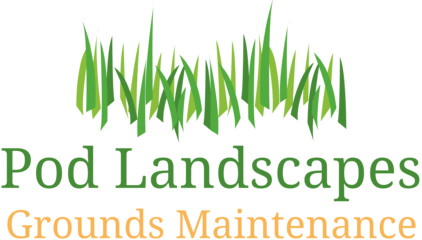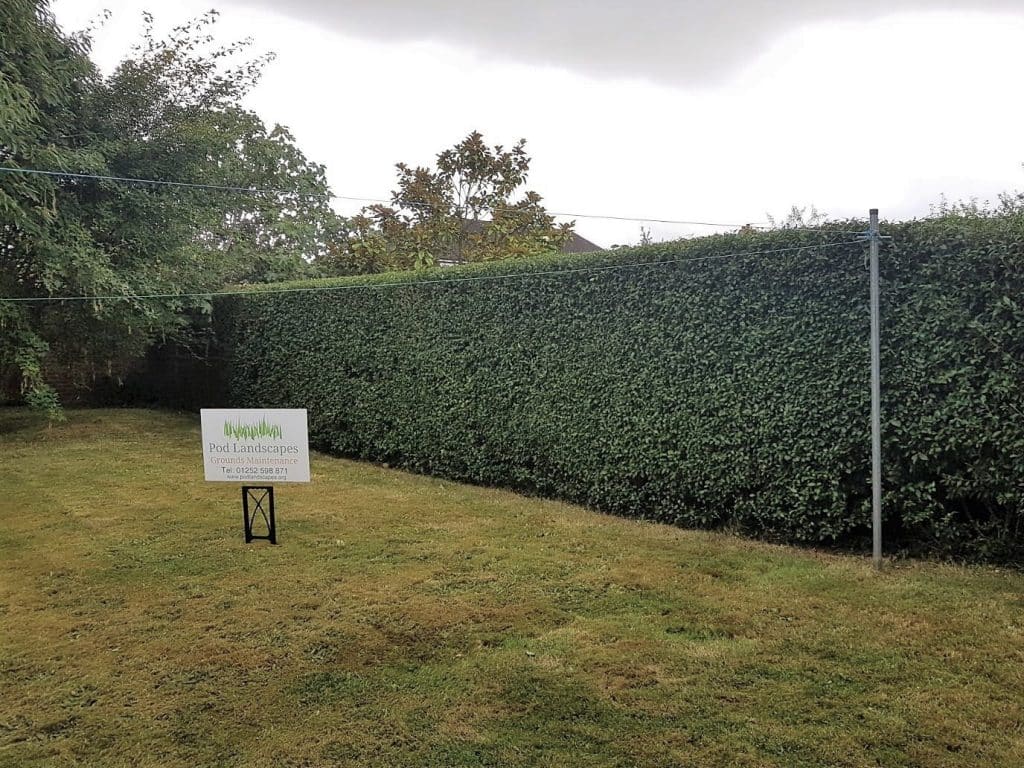As a grounds maintenance company, one of the fairly routine jobs we do is hedge trimming. For businesses, hedges can be a great addition to the property – they provide areas of privacy, they look good, and they break up what can sometimes be very flat landscape. But there is a small downside – for at least a few months out of every year, you might not be allowed to touch them.
Nesting season officially runs from February to August, with the busiest time for birds nesting between 1st March to 31st July. And during this time, you are not allowed to do anything that could affect the any birds who could be nesting in the hedges. It’s often called ‘Hedge Law’, and it’s something we know an awful lot about as grounds maintenance workers.
What is Hedge Law?
Under section 1 of the Wildlife and Countryside Act of 1981, it is an offence to:
‘intentionally take, damage or destroy the nest of any wild bird while it is in use or being built, or to intentionally kind, injure of take chicks or adults, or intentionally take to destroy any eggs.’ The act goes on to list some of the activities that can affect wild birds during breeding season, and that includes ‘trimming or cutting trees, bushes, hedges and rough vegetation’.
And that, in a nutshell, is why it’s very challenging to do any sort of hedge work at this time of year. Because we aren’t allowed to do drastic changes like taking down entire hedgerows, or do severe cut-backs of any kind. But we are allowed to do maintenance trimming on hedges, providing we’ve done a thorough inspection of the hedge. If there is any activity inside it AT ALL, then we can’t touch it until nesting season is over. If you’re caught trimming hedges that are home to nesting birds and breaking this law, you can get an unlimited fine, and be sentenced to up to 6 months in prison for each offence. Yikes!
What Kind of Animals Does Hedge Law Protect?
Hedge law was designed to protect local wildlife, but the main focus was definitely on birds. This is because there are a lot of species of bird that prefer to build their nests in hedgerows, rather than up in trees. In fact, the RSPB say that hedges support up to 80% of the UK’s woodland birds, as well as 50% of our mammals and 30% of our butterflies. And that’s before you get to the ditches and banks that often come along with hedgerows, which provide habitats for frogs, toads, newts and other reptiles. The damaging of a hedge could cause disruption to any of these animals, which is far from ideal.
So it’s safe to say, hedges are great for our wildlife. But hedge law was very much designed to protect bird species who depend on hedges to survive. At least 3 species of bird’s nest in hedges, including:
- Bullfinches
- Turtle doves
- Whitethroats
- Linnets
- Yellowhammers
- Dunnocks
- Lesser whitethroats
- Willow warblers
- Wrens
- Robins
- Grey partridges
- Chaffinches
- Blackbirds
- Song thrushes
To name just a few. Each type of bird will prefer a different kind of hedge or a different height to nest at, but all of them will aim for hedges in the first few months of the year.
What Does That Mean For You?
As you’ve probably noticed, there’s a lot of growing happening in hedges at this time of year, and they can get pretty unruly pretty quickly. And if you’re on a commercial property, they can represent a safety hazard too. Overgrown hedges in carparks can block sightlines and make it unsafe for road users, and overgrown hedges on pavements can impede pedestrians and even motorists if left unattended for too long. And since it’s your responsibility as the land owner to maintain safe grounds, you don’t want to just leave them to it for several months out of the year!
The good news is, nesting season doesn’t automatically mean we can’t trim your hedges for you. Before we work on any hedges during nesting season, we do a thorough examination to make sure there is no activity inside or underneath them at all. Of course we do this kind of inspection before we cut hedges at any time of year, but we are particularly thorough during nesting season. If we find any activity, we leave them alone. If there isn’t, then we can trim them to shape, keep them looking nice and make sure they aren’t a safety hazard. And if we do find activity in a hedge that needs trimming for any of the safety reasons above, then we can advise you on what to do next. This usually involves getting in touch with your local relevant authority, and putting appropriate safety barriers around it until nesting season is over. We would not touch it ourselves, and we would let you know not to touch it either – we don’t want anyone getting fined!
So other than trimming hedges to shape, this is the time of year we focus on other areas of your grounds maintenance. That means looking after grass, trees and flowerbeds, clearing up any of the last leaves from winter, and jet washing pathways to clean away the mud and muck that’s built up. Once nesting season is over, we can take a look at those hedges again and see if you want any big changes made. If you would like to know more about hedge maintenance, or some general advice about how to look after your commercial grounds, we would love to hear from you. Just get in touch with our team today, and we will be in touch shortly.


